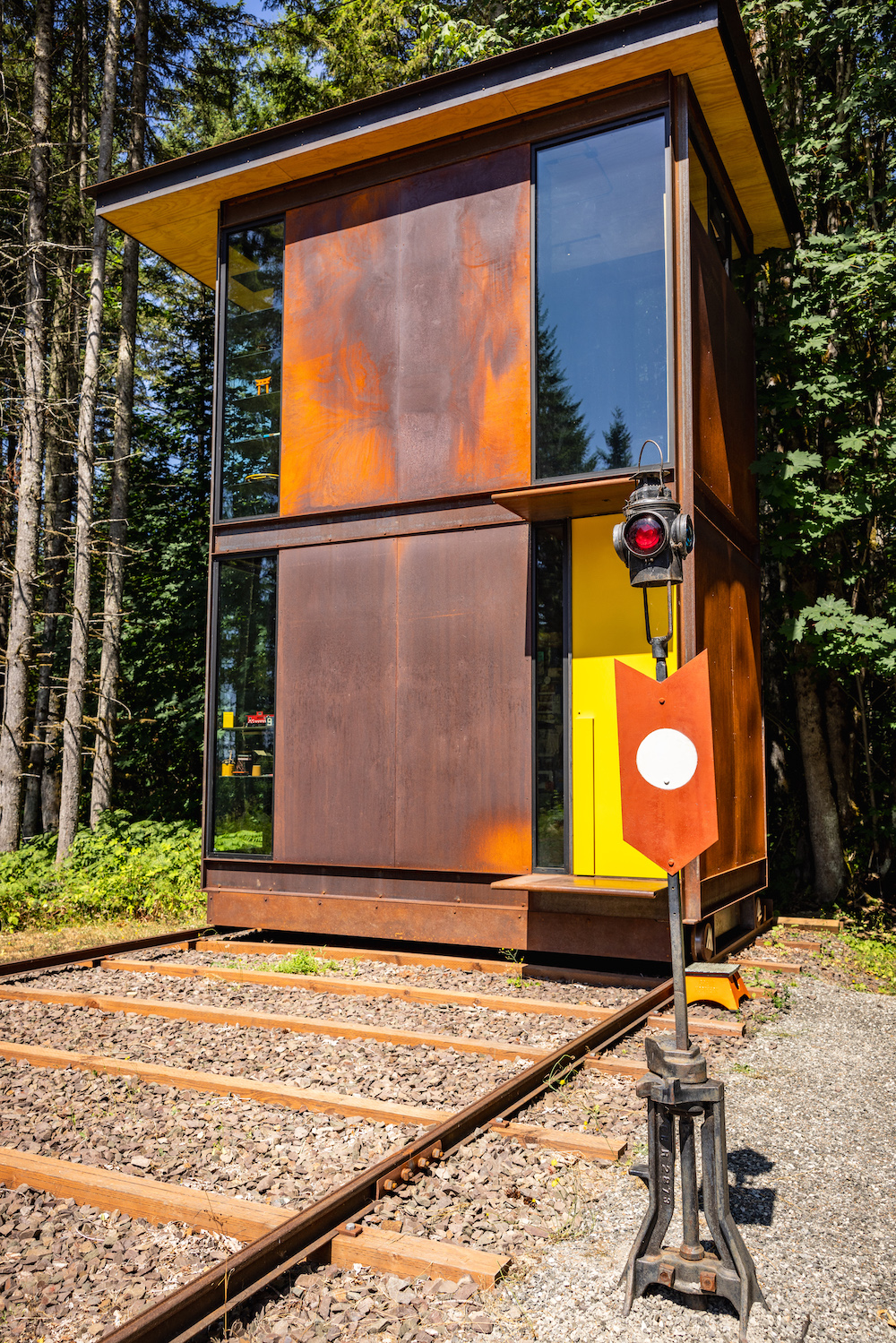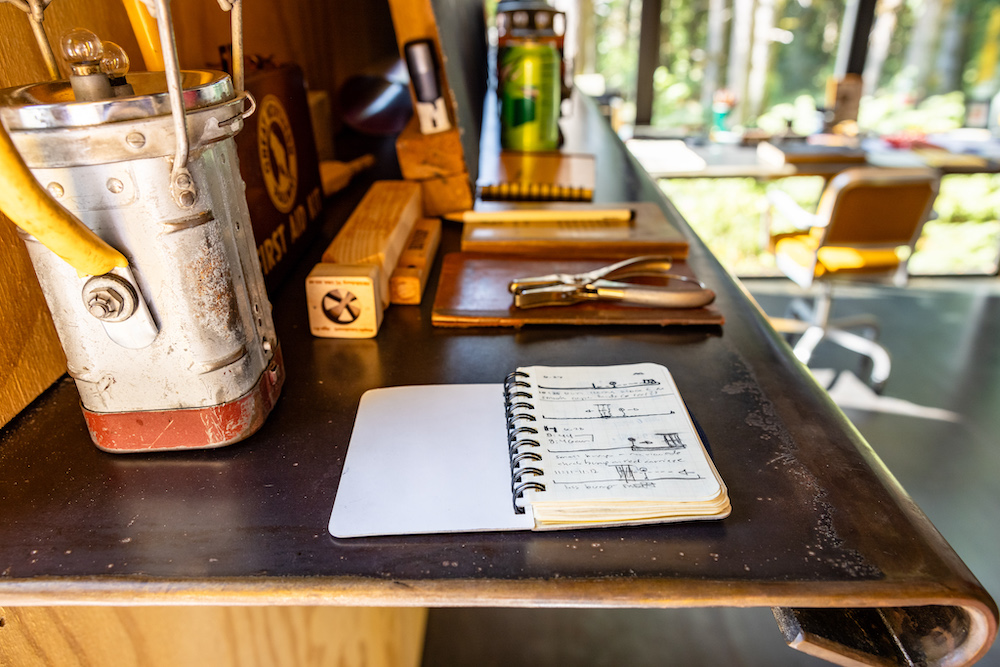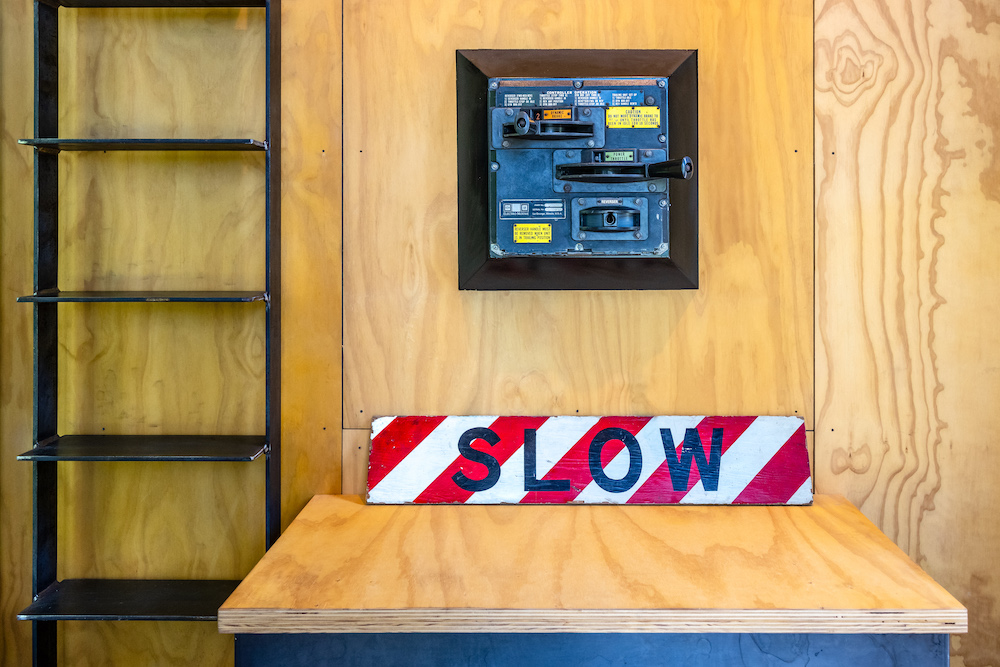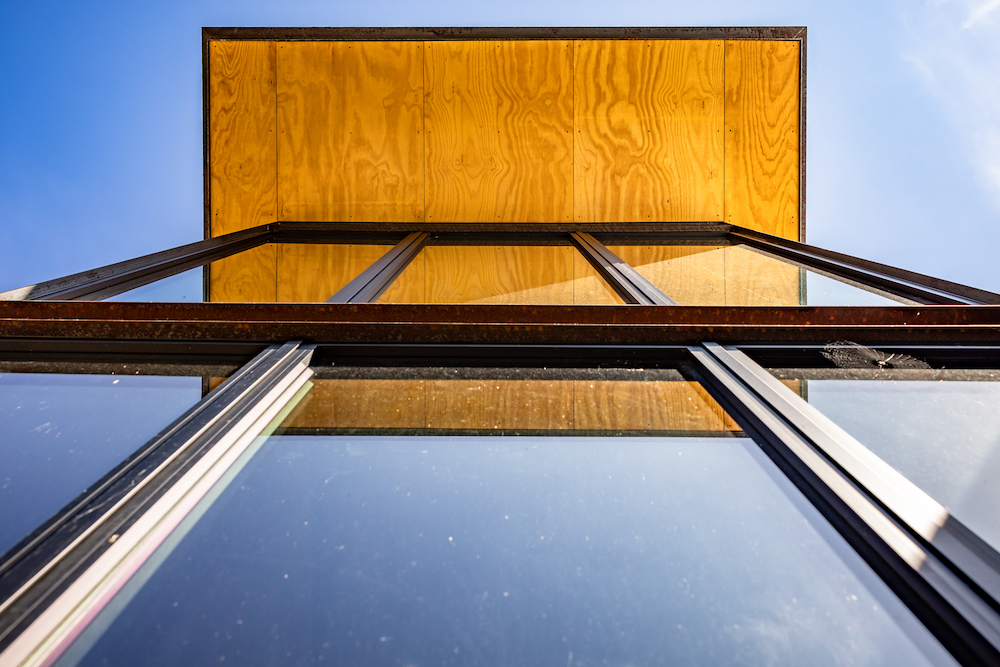
As the Maxon Railway car pulls away from the platform everything seems business as usual. Steel rails. Steel wheels. A slight clickety-clack. The whizzing soundtrack of an electrified locomotive. Check. Check. Check. Check.
Except this is no ordinary rail car and this railway is definitely nowhere near ordinary.
Located in the Pacific Northwest with the forest as its backdrop and in the historic shadow of logging railroads in addition to the Milwaukee Road and the Great Northern, my Maxon Railway is more than just a one-of-a-kind train set.
My railway is wide, with a 15-foot gauge; short, at just 110 feet long; and tall; with its one railcar towering 24 feet above the rails. With a functional interior inspired by caboose design, the office of the Maxon Railway is a private two-story working space for my branding and design studio. It runs on reclaimed rails from the Great Northern Ry. which once ran through and terminated in Carnation (Tolt) on the Cherry Valley branch line with service to Seattle and Chicago on the iconic Empire Builder line.
The studio features a working inspiration space on the first story complete with an observation car-inspired glass wall spanning 10 feet and reaching nearly 24 feet in height, offering views of the valley and sightlines to the original railroads that once brought passengers and freight to town.

Designed in partnership with Seattle-based architects Olson Kundig, a firm widely known for spaces that connect and commune with the landscape, Maxon Railway was imagined and built with a mix of centuries-old technology and modern engineering.
My office railcar operates by means of a 240-volt electric motor with a frequency drive control. The motor couples to a gear reducer that transfers power to the main axle shaft on one end of the office. By the use of limit switches and rheostat, the control of motion is attained. A reclaimed and rewired General Motors Electro-Motive Division locomotive control panel governs its direction and speed. At the insertion of the reverser, I can run the studio down the railway at notch 1 through 8 at a speed ranging from a couple miles an hour to top speed of 6 to 8 mph.

The second story is reached by a ladder inspired by ones you’d see on a freight boxcar or caboose. To transport items between the two floors I have a vertical rail dumbwaiter operated by a spare lever on the locomotive control panel. A steel basket moves supplies up and down and is operated by a small electrical motor manufactured in Japan and normally used to power sushi belts in restaurants. Electricity is supplied to the railcar by means of an industrial-size reel mounted under the rail carriage which unspools and spools a protected 40-amp electric cable out and back in with each round trip journey.
Upstairs features a full library with dramatic views over the valley and through the forest and treetops. It serves as a place of reflection and study for me. Two of the interior walls are made from rolled steel and magnetized for displaying work and inspiration while the other walls are slightly sanded pine plywood, a nod to the old cabooses and their sparse interiors.
In addition to providing a creative backdrop for my work, the studio is a rolling mini railroad museum of the Pacific Northwest and beyond. Artifacts abound on shelves and desks from lanterns to telegraphs, model railroads, print ads, tickets, timetables, and a bullet-ridden Great Northern locomotive shield. On one shelf is an original prop from the movie The Darjeeling Limited by Wes Anderson.
As my studio rolls down to the end of the line it’s safe to say I don’t have an ordinary commute to work. And that’s what makes it memorable. A railway that truly proves that it is the journey, not the destination that counts.
Follow Maxon Railway or on Instagram @maxon_railway.















I’m in awe of the creativity and resourcefulness that went into this project.
I have to admit, I am jealous.